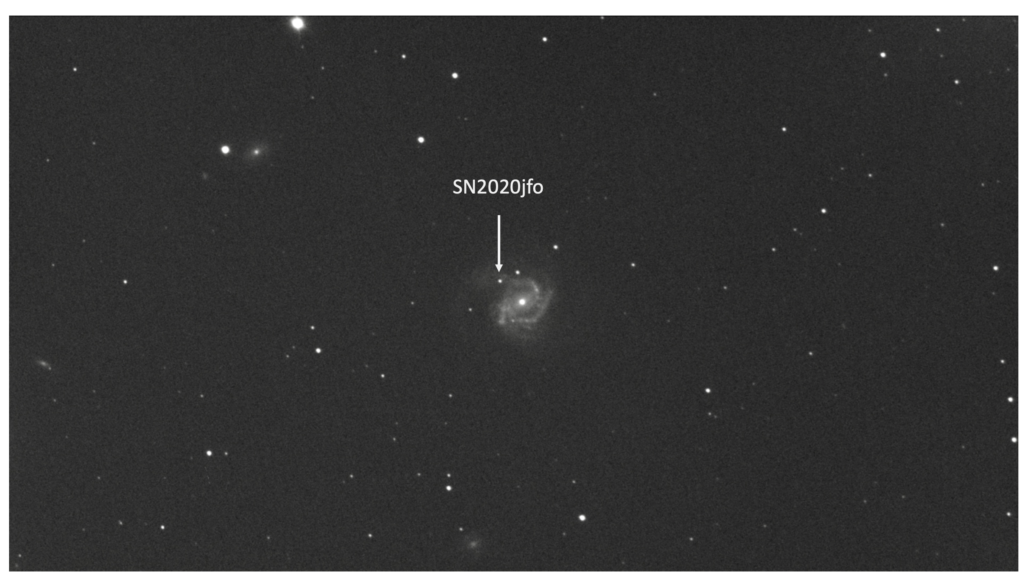
The galaxy M61 has done it again: it’s produced another supernova, the eighth such event since 1926. That makes this lovely face-on spiral galaxy in the Virgo cluster one of the most prolific supernova producers of the past century.
The supernova, cataloged as SN2020jfo, was discovered on May 6, 2020 at the Zwicky Transient Facility at Palomar Observatory near San Diego. Upon discovery, the exploding star was magnitude 14.7. It’s since brightened to about 14.3. To see it visually requires at least a 10″ telescope, but it is relatively easy to take a snapshot with an astronomy camera and a much smaller scope. I took the 20x10s stack of images at the top with an 85mm Tele Vue refractor, an 0.8x focal reducer, and an inexpensive ZWO ASI290MM camera.
One of the more prominent members of the Virgo cluster, Messier 61 is a lovely barred spiral with winding arms knotted with star-forming nebula and clouds of blue-white stars. It’s a starburst galaxy, one wracked with prodigious star formation which explains why so many supernovae have been seen here. With lots of massive, fast-burning young stars forming, it’s inevitable that they reach their spectacular end as a Type II supernova during which the star, as it runs out of fuel, collapses and snaps back in a spectacular explosion. It releases as much energy in a few weeks as our Sun releases in its entire 10 billion year life span.

M61 is about the same size as our Milky Way and lies about 52 million light years away, so the progenitor star detonated when Earth was in the Eocene period back when Australia and Antarctica were still connected and most of the planet was covered in lush forest.
And since astronomy is not just a matter of contemplating space but also time, keep in mind that the light from thousands more supernovae from M61 are on the way to us now, events to be detected by generations of Earth-bound astronomers yet to be born.
Share This: